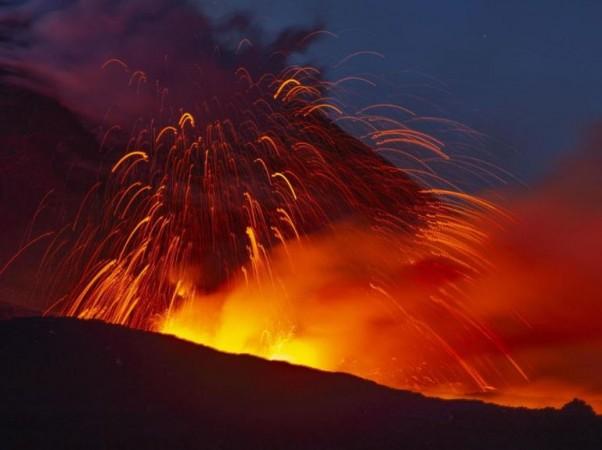
Europe's most active volcano Mt Etna began spewing lava on Thursday, May 30. While there is volcanic activity, officials say that everything is contained at the summit and there is no need for relocation at the moment.
The last time the mountain showed volcanic activity was in December. Now, more cracks have formed in the volcano with lava running down the side.
The volcanic activity is taking place from two eruptive fissures on the north-eastern and south-southeaster sides of the volcano with lava spurting from them.
Eruption of Mount Etna, Sicily, Italy.
— Buitengebieden (@buitengebieden_) May 31, 2019
May 30, 2019
? Biagio Ragonese#etna #eruption #volcano #mountetna @spann @JimCantore pic.twitter.com/zTHLWWAnl2
"Most eruptions on the sides of Etna are preceded by modest seismic activity, but this time they haven't," Boris Behncke, a volcanologist was quoted by Express.
He added, "In some cases, the earthquakes continue even after the beginning of the eruption (as in 2002 and December 2018)."
While the residents at the base of the mountain need not be relocated as yet, Eugenio Privitera, the director of the National Institute of Geophysics and Volcanology, said that visitors need to keep away from the active volcano. Mt Etna is a popular tourist spot in the country with thousands thronging to the site every year.
Privitera is not sure about the duration of the active phase of the volcano and said that it may go one for just a few days or may last for months.
The last time that the volcano erupted in December, minor earthquakes were caused, damaging many buildings in the vicinity.











![Miss Universe 2024: India's Rhea Singha slayed swimsuit round but failed to reach Top 12 [Watch]](https://data1.ibtimes.co.in/en/full/806361/miss-universe-2024-indias-rhea-singha-slayed-swimsuit-round-failed-reach-top-12-watch.jpg?w=220&h=138)




